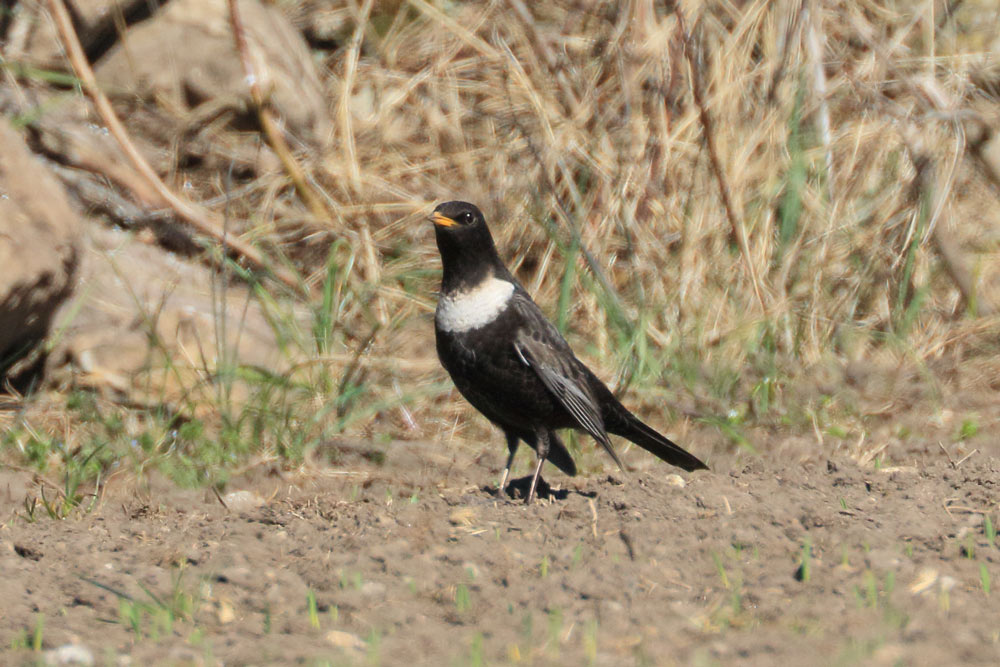Prehistoric harbor
Öland's northern cape has always been an important point of contact for the merchant fleet in northern Kalmarsund and a very large part of the older shipping to Gotland has passed here. The importance of Grankullaviken as a port for Böda parish can hardly be underestimated. The shallow and wide bay is known in the medieval material as Örehamn, but probably the harbor has also been important during prehistoric times. During modern times, Grankullaviken has been of great importance for shipping timber. The area's connection to sailing is strengthened by the wreckage of the 1926 Åland ship Swiks on the east shore. Grankullaviken also has great biological values.
Outside Öland's northern cape is the island Stora grundet, which today has a land connection through a bridge. On Stora Grundet stands the lighthouse Långe Erik.
On the island of Lilla grundet in the mouth of Grankullaviken there are the remains of St. Olof's chapel and a cemetery. The chapel is mentioned in 1515 in a list of chapels. At that time, the chapel was still under a roof, but there is no further information about the building. Stone was probably taken from the chapel ruin when the Långe Erik lighthouse was built and today only a turfed hill remains.
The northeastern cape, with the well-known Trollskogen, is one of the island's more popular tourist destinations. In the northern part of the cape was a naval base in the 15th century. There are also some small fortifications after the naval base.
Source: County Administrative Board of Kalmar County
Birdwatching
In the spring, migrating birds gather in the vegetation. In April, the migration of birds is dominated by finches, sparrows, robins, pigeons and thrushes. In May, many Common Redstarts may suddenly be here or hundreds of Sylvia singers move in the bushes. Other species that are seen annually are the Bluethroat, Redfooted Falcon, Turtle Dove, Ring Ouzel, European Serin, Red-breasted Flycatcher and Citrine Wagtail. In the second half of May, the Barnacle Geese begin to migrate, as do Arctic waders such as Grey Plover and Bar-tailed Godwit.
In summer, observations are made of Pied Avocet, Lesser Black-backed Gull, Sandwich Tern, Little Tern, Little Ringed Plover, Barred Warbler and Common Rosefinch.
During the autumn, a large number of tits can move in the area. Jack Snipe is noted regularly. Pine Grosbeaks appear when all the trees of Swedish Whitebeam have red berries.
In winter, loons, Red-necked Grebes, Black Guillemots, Common Scoters and Common Eiders rest around the cape. Sometimes you can find a King Eider in the flocks. Near the bridge, in winter you can come across Rock Pipits, White-throated Dippers and Purple Sandpipers. The seaweed beach along the small bay on the south side of Stora Grundet can surprise in winter with Meadow Pipit and Common Snipe. White-tailed Eagle are seen daily in several specimens.
Öland's northern cape has attracted attention for very rare, eastern bird rarities, even in late autumn, such as Siberian Accentor, Back Redstart of the subspecies phoenicurus and Pied Wheatear. Here, Sweden's first Phylloscopus coronatus was discovered in October 2019.
 Foto: Stefan Svenaeus
Foto: Stefan Svenaeus Foto: Stefan Svenaeus
Foto: Stefan Svenaeus Foto: Stefan Svenaeus
Foto: Stefan Svenaeus Byggnad vid fyren. Foto: Stefan Svenaeus
Byggnad vid fyren. Foto: Stefan Svenaeus Yttersta spetsen på Stora grundet med den lilla ön Borren samt Lilla grundet i bakgrunden. Foto: Stefan Svenaeus
Yttersta spetsen på Stora grundet med den lilla ön Borren samt Lilla grundet i bakgrunden. Foto: Stefan Svenaeus Bron mellan norra udden och Stora grundet. Foto: Stefan Svenaeus
Bron mellan norra udden och Stora grundet. Foto: Stefan Svenaeus Klöverärt Foto: Stefan Svenaeus
Klöverärt Foto: Stefan Svenaeus Ringtrast Foto: Stefan Svenaeus
Ringtrast Foto: Stefan Svenaeus Västra skansen Foto: Stefan Svenaeus 2014
Västra skansen Foto: Stefan Svenaeus 2014